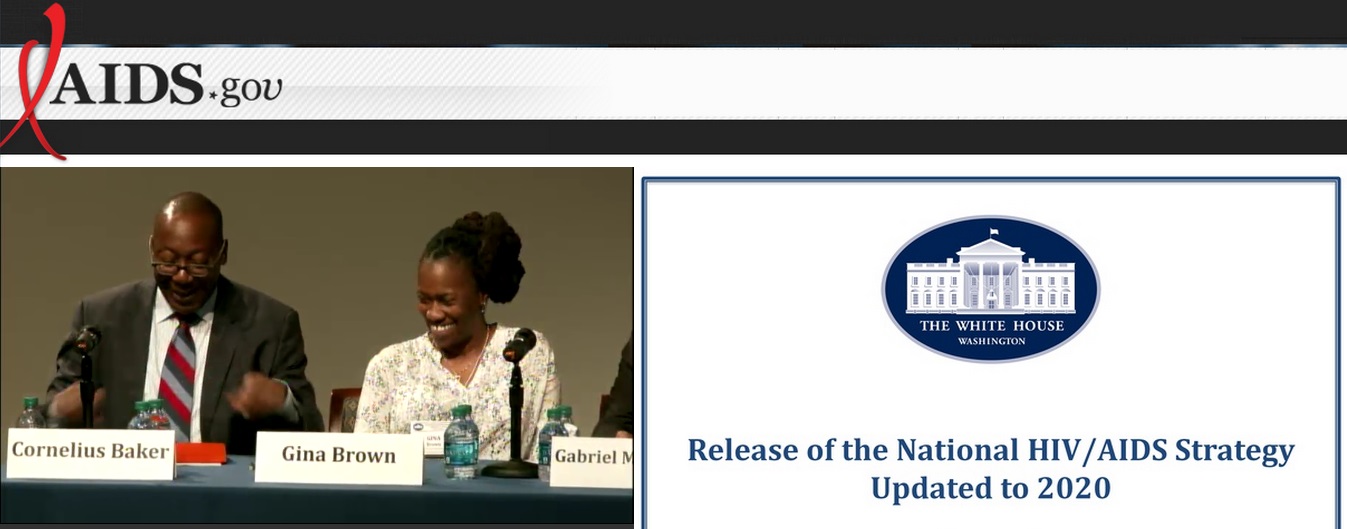FOR IMMEDIATE RELEASE
Contact: Olivia Ford, [email protected] / 347-553-5174
July 31, 2015 –Yesterday, the White House Office of National AIDS Policy (ONAP) unveiled the newest version of the US National HIV/AIDS Strategy (NHAS, or Strategy), updated to 2020. Positive Women’s Network – USA (PWN-USA), a national membership body of women living with HIV, applauds the Strategy’s stated commitment to address the effects of past and current trauma in HIV care, and its expansion of priority populations which now include Black women, transgender women, youth, and people in the Southern states.
“This new version of the Strategy corrects a number of the omissions pointed out in our gender audit of the initial version of the Strategy,” says Naina Khanna, Executive Director of PWN-USA. The new NHAS maintains the previous version’s overall goals of reducing new HIV cases and HIV related health inequities, improving health outcomes, and achieving a more coordinated national HIV response. In light of stark statistics and ongoing calls from advocates for federal recognition of the impact of HIV on Black women and Southern residents, the Strategy now includes a metric to measure progress toward reducing new HIV cases among these two overlapping groups.
However, the Strategy does not explicitly address disparities in health outcomes for Black women already living with HIV, whose death rates dwarf those of their white counterparts. Transgender women, who face astronomical HIV rates and high vulnerability to violence, are on a short list for indicators to be developed to measure progress in serving them under the new Strategy, but no such indicator exists as of the Strategy’s launch.
Following years of advocacy by PWN-USA leaders, the 30 for 30 Campaign, and others, the work of the Federal Interagency Working Group on the Intersections of Violence Against Women, HIV, and Gender-related Health Disparities has been integrated into the steps and recommended actions of the new Strategy. The Strategy also includes language committing to explore trauma-informed approaches to women’s HIV care.
Nevertheless, despite copious evidence that sexual and reproductive rights of people living with HIV are routinely violated, there is still no mention of reproductive health or rights, and sexual health of people with HIV is only marginally addressed, in the new NHAS.
A federal plan for putting the Strategy’s commitments into action is expected before the end of this year. PWN-USA encourages ONAP to take advantage of this opportunity to strengthen the Strategy’s effectiveness, including but not limited to: incorporating explicit language and metrics around sexual and reproductive health and overall quality of life for women living with HIV; developing indicators to support HIV prevention and care for transgender women; addressing root causes of poor health outcomes among Black women living with HIV; and developing a plan to address mental health, including high rates of depression as barriers to quality of life for women living with HIV.
We commend ONAP for its efforts to ensure greater responsiveness to the needs of women, transgender women, and youth in the new National HIV/AIDS Strategy, and look forward to working in partnership to support implementation over the next five years.
More Information:
30 for 30 Campaign Applauds Inclusion of Women’s Health Needs in New National HIV/AIDS Strategy
Infographic: National HIV/AIDS Strategy: Updated To 2020 – What You Need To Know
Infographic: National HIV/AIDS Strategy: Updated To 2020 – 5 Major Changes Since 2010





[…] the newest version of the Strategy was released in July, it contained powerful and long-fought-for commitments to explore trauma-informed approaches to women’s HIV care. A plan for putting the full commitments of the Strategy into action is […]